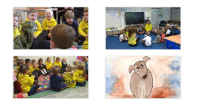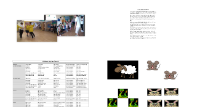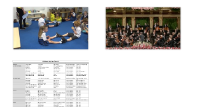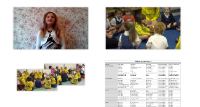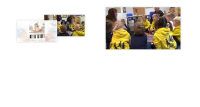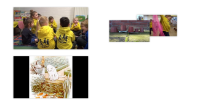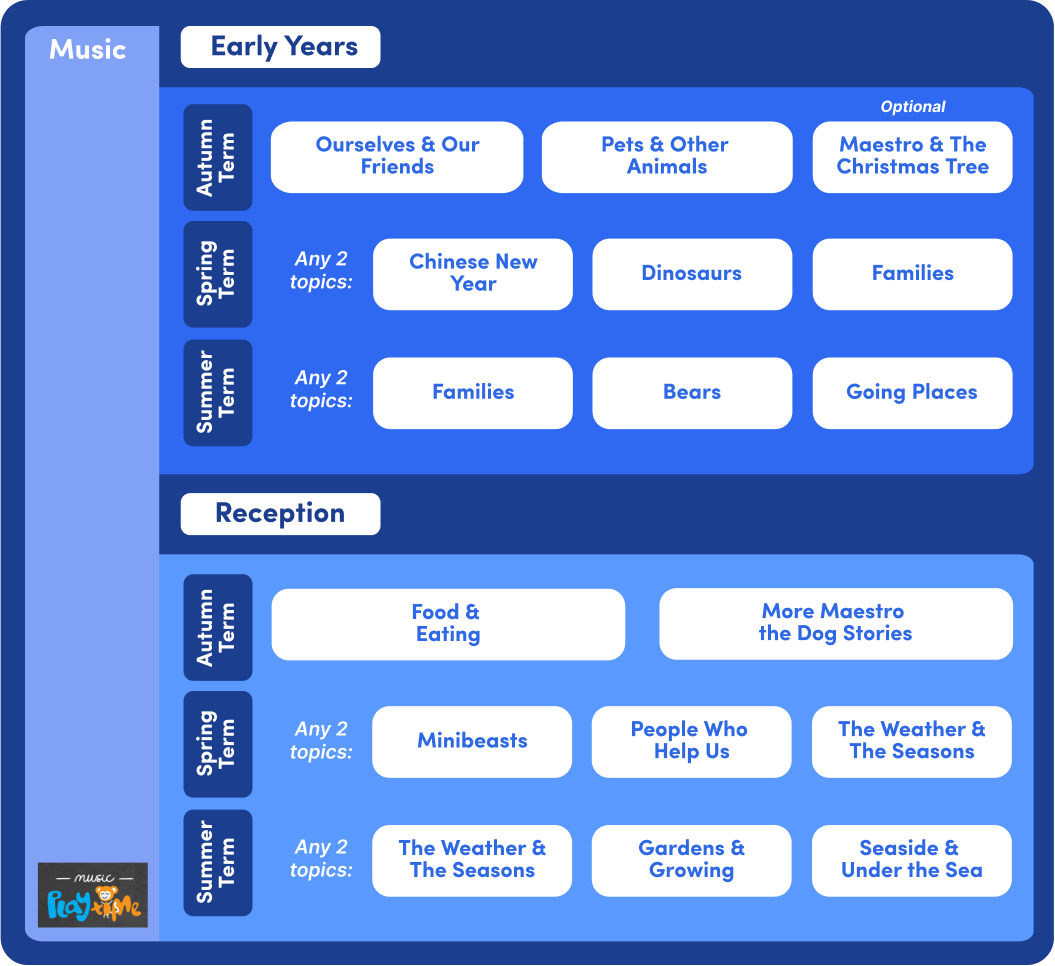Seaside & Under the Sea Level: Early Years
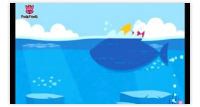
Baby Shark!
I had to include this one, and it's with the kind permission of the owners, Pink Fong. After watching the video, the children could learn the song, if they don't already know it, by singing along with the video and doing the actions. Then sing it unaccompanied with the actions. You could add some rhythmic percussion eg shakers to help keep everyone in time.
Have you brought your sharky voice? (timbre, pitch)
Next, you could play the Have you brought Your ... Voice? game, using the voices from the video, being expressive with both the high and low pitches of the voices and also the tone quality (timbre).
- Teacher: Have you brought your baby shark voice (high-pitch, baby voice)
- Children: Yes we have, yes we have (imitate high-pitch, baby voice)
- Teacher: Have your brought your mummy shark voice? (medium-pitch, grown-up voice)
- Children: Yes we have, yes we have (imitate medium-pitch, grown-up voice)
- ... and so on
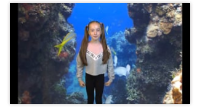
The Fishes in the Sea
This is sung to the tune of The Wheels on the Bus, which you'll find in the Going Places unit. The tune is one of those that you'll hear sung in slightly different ways depending on who is singing but this is the one we like best:
- The fishes in the sea go swim, swim, swim
- Swim, swim, swim, Swim, swim, swim
- The fishes in the sea go swim, swim, swim
- All day long
- __
- The waves on the sea go whoosh, whoosh, whoosh
- Whoosh, whoosh, whoosh, Whoosh, whoosh, whoosh
- The waves on the sea go whoosh, whoosh, whoosh
- All day long
- __
- The shells in the sea go crunch, crunch, crunch
- ... and so on
- __
- The birds on the sea go swoop, swoop, swoop
- ... and so on
A Sailor Went to Sea, Sea, Sea
This is an ideal song for doing actions that go with the words. In subsequent verses, it's fun to substitute the silly words: chop, chop, chop, knee, knee, knee and Chestnut tree, as demonstrated in the recording. In case you are wondering, I don't know why we sing chop, chop, chop since it doesn't rhyme - but perhaps it's better than using the only other rhyming possibility wee, wee, wee (just don't go there!)
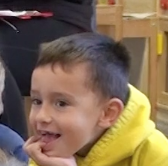
- A sailor went to sea, sea, sea
- To see what he could see, see, see
- And all that he could see, see, see
- Was the bottom of the deep blue sea, sea, sea
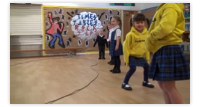
In the Sea … On the Boat! (developing listening skills)
This is a version of a listening skills game that I learned from my good friend, Stephanie, with whom I worked for several years. The children loved it! Put two, long rows of joined-together skipping ropes on the ground, about a metre apart, and curve the ends round to meet, making a boat shape. Inside the lines of rope, the children are on the boat; outside the lines they are in the sea. Alternate between calling out, 'On the boat!' - the children jump into the 'boat' - and, 'In the sea' - the children jump into the sea.
Extension Activity (timbre)
The game is great fun just as it stands but you could extend it by playing, for instance, a drum for In the sea and a tambourine for On the Boat. The children have to listen very carefully to just the instrument without the words.
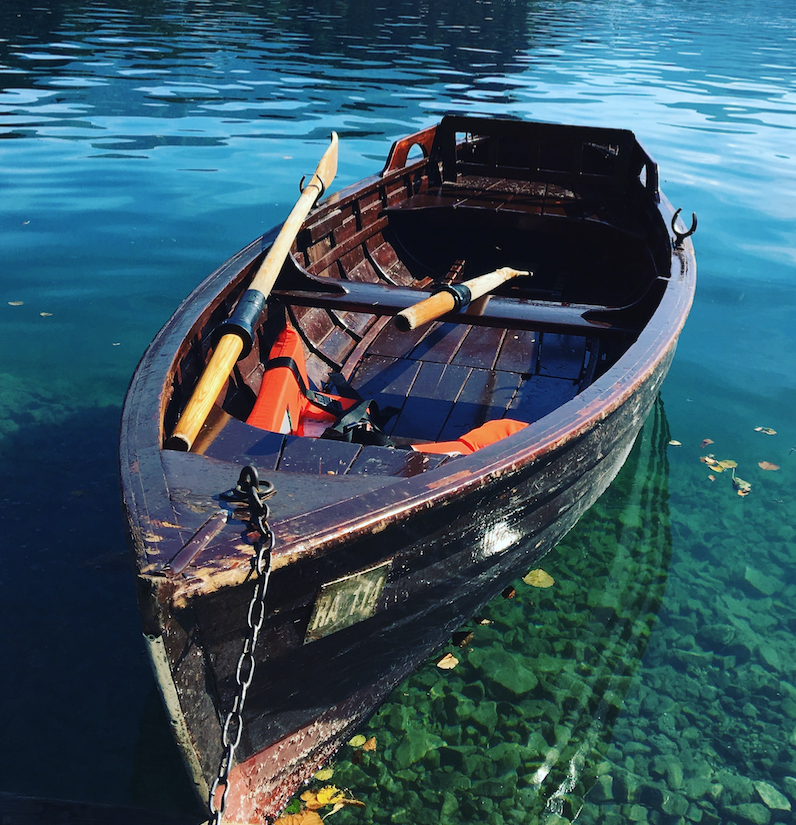
Guess the Buried Treasure (timbre)
Fill identical containers (not see-through ones) with everyday treasure objects like coins, tiny beads, pretend bank notes, coloured stones, 'silver' teaspoons, sugar (once very expensive!). They must sound different when shaken. Before you begin the game, talk with the children about what treasure might be eg jewels, precious stones, coins, bank notes, silver cutlery, rare foods, magic beans.
First the children have to find the containers, labelled with a picture of a pirate for identification, hidden around the room. Next they shake the containers and guess what is in them. Show the contents of the containers when everyone has guessed.
Put the contents back and let the children shake them again and try to say what is in them by listening, and comparing with the sounds they remember.
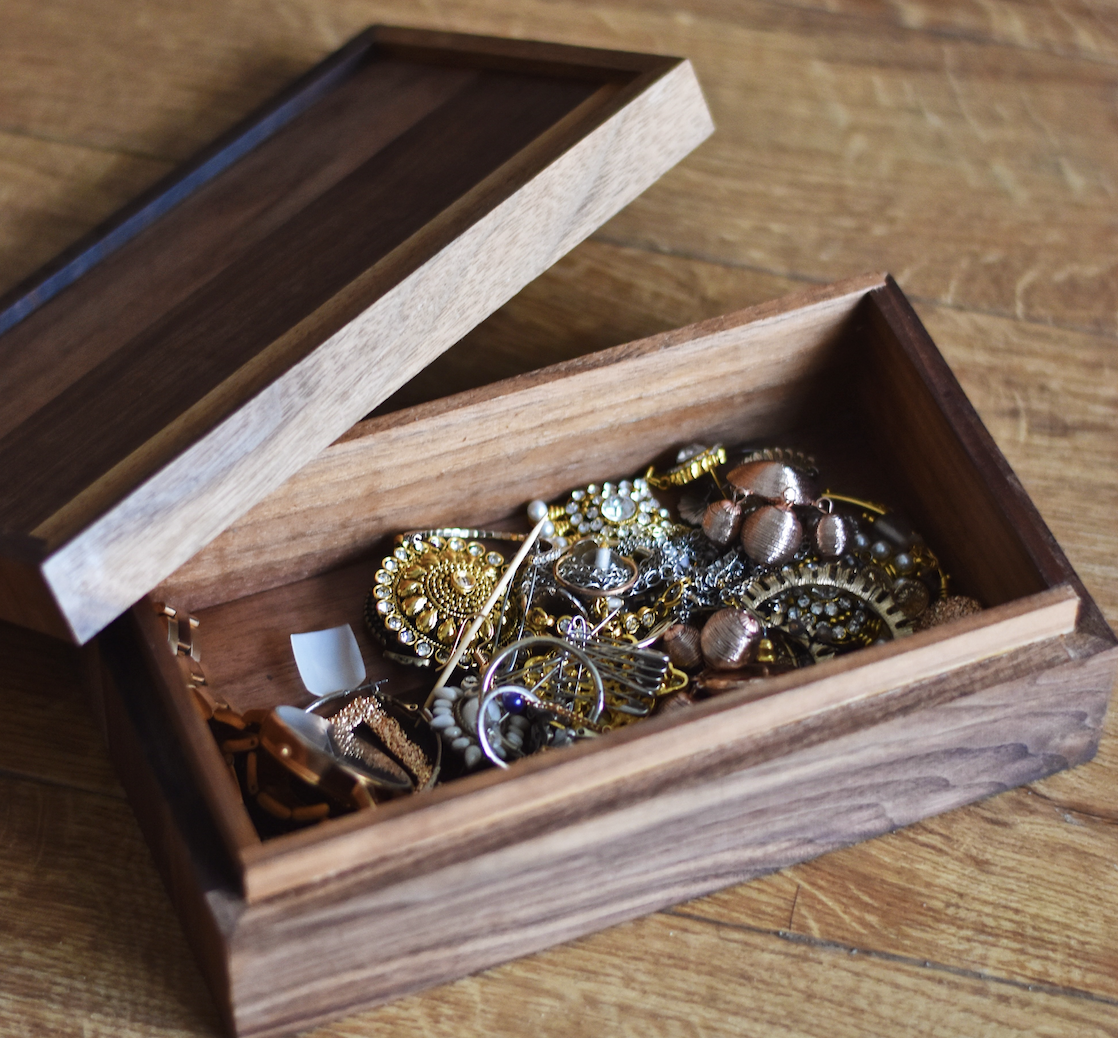
At the Bottom of the Sea
You'll need to teach the song first before playing this game. The children take turns to be a fish, swimming in and out of the other children who are sitting in their own space on the floor, singing the song. When the song stops, the 'fish' taps the shoulder of the nearest child who then becomes the fish. The game ends when each child has been a fish so the swimming fish must only tap a child on the shoulder who has not yet had their turn.
- At the bottom of the sea
- All the fish are swimming
- Here and there and everywhere
- They're swimming in the ocean


Sounds Fishy! (timbre)
First divide the children into groups of fish, waves, shells and birds. In their groups, the children first experiment with 'found sounds' to represent their sea persona. Have materials and suggestions - things to scrape, rattle, rustle and ting such as wafting paper, peas in a tambourine or large box rolling from side to side, an empty crisp packet, a pencil tinging a metal container.
When you talk with the children, compare one sound with a different one and say, 'This sound has a different timbre from that one' (timbre is pronounced tambrah). The children will begin to understand the word through the context.
The children need to practise making their sound three times in a row. Now they can sing The Fish in the Sea again, making their sound (fish, waves, shells or birds) only when it's their word eg swim, swim, swim. Next time they sing the song, they can omit those words and, instead, make the sound.
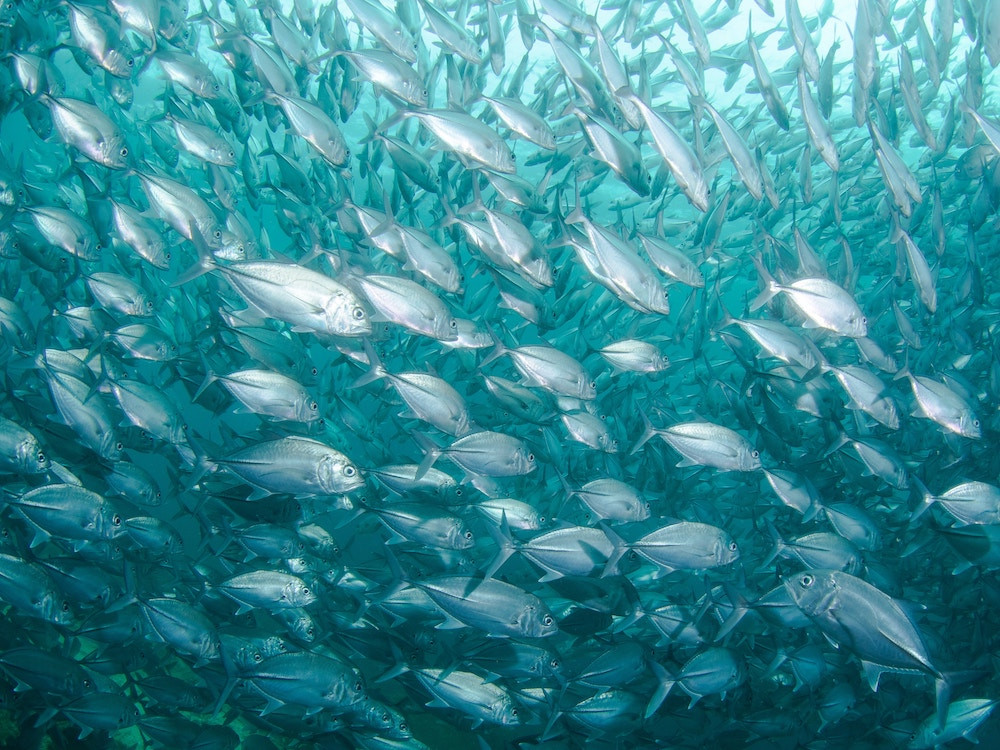
A Sea Sound Picture
Collect together lots of seaside items that can make a sound eg a spade against a bucket, pebbles in a bag, a bouncy beach ball. Ask the children to choose a seaside sound that they can make as part of a seaside sound picture in which they take turns to make sounds and also make sounds at the same time, just like it would be on the beach. Encourage creativity with vocal sounds, found sounds (eg pouring water into a bucket) and body sounds too. Make a recording of the sound picture for the children to listen to.
Here is one we made earlier! We used: walking on gravel, bouncing a ball, pouring water, shaking shells in a bag, picking up and putting down large pebbles, vocal sshhh sounds and blowing sounds for the breeze. Shall I tell you or not? ... We cheated a bit by using a rainstick and the passing car is there because we recorded it outside.
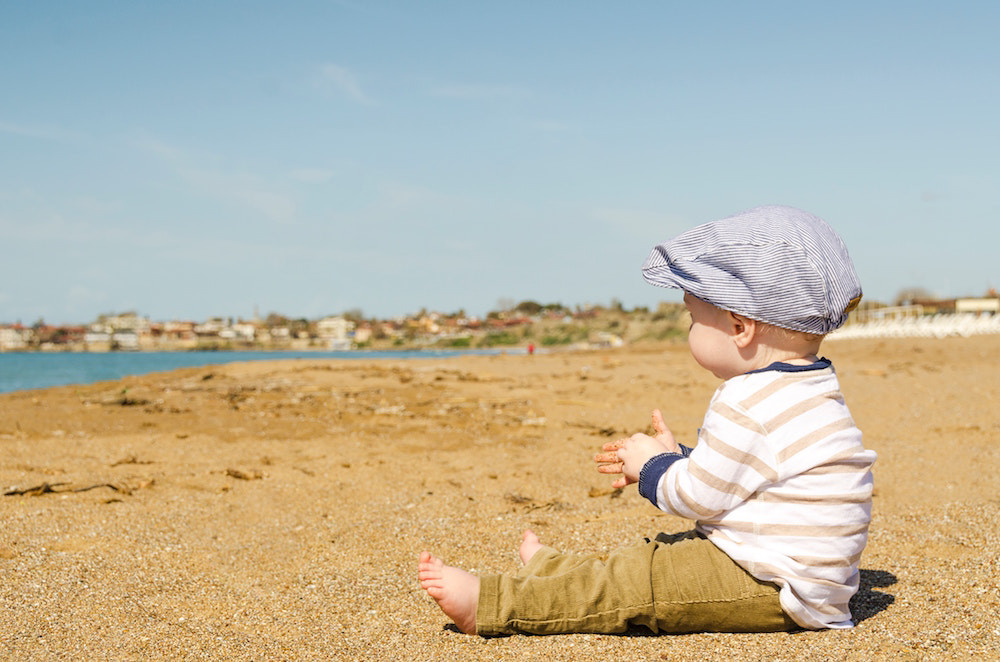

Ship's Statues
The children dance around the room to the music. Stop the music every so often and, each time the music stops, call out which position the children must freeze in:
- Pirate – stand on one leg
- Sea snail – curl up
- Ship's Captain – salute
- Starfish – spread out on floor
Listening extension
After the game, take the opportunity to ask the children about the music, for example:
- What did you like best about the music?
- Was the tempo of the music fast or slow?


Sharks and swimmers (PE link)
This is what you need:
- Chalk (if using as a playground activity)
- Markers (if using as an indoor activity)
- Whistle
Here's what to do:
Divide the children into groups of sharks and swimmers with one third of the children being the sharks and the other two thirds of the children being the swimmers.
Mark out a line in chalk or with markers at one end of the playground and another line at the other end of the playground as the starting and finishing points for the swimmers.
Halfway between the starting and finishing point, mark out a starting point for the sharks.
At the sound of the whistle, the swimmers must try to get from their starting position to the finishing point without being caught by a sharks.
The sharks must try to catch the swimmers by tagging them. Once tagged the swimmers must sit down where the were caught until the end of the game when all of the children have either reached the finishing point or been caught by the sharks.


Baby Shark!
I had to include this one, and it's with the kind permission of the owners, Pink Fong. After watching the video, the children could learn the song, if they don't already know it, by singing along with the video and doing the actions. Then sing it unaccompanied with the actions. You could add some rhythmic percussion eg shakers to help keep everyone in time.
Have you brought your sharky voice? (timbre, pitch)
Next, you could play the Have you brought Your ... Voice? game, using the voices from the video, being expressive with both the high and low pitches of the voices and also the tone quality (timbre).
- Teacher: Have you brought your baby shark voice (high-pitch, baby voice)
- Children: Yes we have, yes we have (imitate high-pitch, baby voice)
- Teacher: Have your brought your mummy shark voice? (medium-pitch, grown-up voice)
- Children: Yes we have, yes we have (imitate medium-pitch, grown-up voice)
- ... and so on

The Fishes in the Sea
This is sung to the tune of The Wheels on the Bus, which you'll find in the Going Places unit. The tune is one of those that you'll hear sung in slightly different ways depending on who is singing but this is the one we like best:
- The fishes in the sea go swim, swim, swim
- Swim, swim, swim, Swim, swim, swim
- The fishes in the sea go swim, swim, swim
- All day long
- __
- The waves on the sea go whoosh, whoosh, whoosh
- Whoosh, whoosh, whoosh, Whoosh, whoosh, whoosh
- The waves on the sea go whoosh, whoosh, whoosh
- All day long
- __
- The shells in the sea go crunch, crunch, crunch
- ... and so on
- __
- The birds on the sea go swoop, swoop, swoop
- ... and so on
A Sailor Went to Sea, Sea, Sea
This is an ideal song for doing actions that go with the words. In subsequent verses, it's fun to substitute the silly words: chop, chop, chop, knee, knee, knee and Chestnut tree, as demonstrated in the recording. In case you are wondering, I don't know why we sing chop, chop, chop since it doesn't rhyme - but perhaps it's better than using the only other rhyming possibility wee, wee, wee (just don't go there!)

- A sailor went to sea, sea, sea
- To see what he could see, see, see
- And all that he could see, see, see
- Was the bottom of the deep blue sea, sea, sea

In the Sea … On the Boat! (developing listening skills)
This is a version of a listening skills game that I learned from my good friend, Stephanie, with whom I worked for several years. The children loved it! Put two, long rows of joined-together skipping ropes on the ground, about a metre apart, and curve the ends round to meet, making a boat shape. Inside the lines of rope, the children are on the boat; outside the lines they are in the sea. Alternate between calling out, 'On the boat!' - the children jump into the 'boat' - and, 'In the sea' - the children jump into the sea.
Extension Activity (timbre)
The game is great fun just as it stands but you could extend it by playing, for instance, a drum for In the sea and a tambourine for On the Boat. The children have to listen very carefully to just the instrument without the words.

Guess the Buried Treasure (timbre)
Fill identical containers (not see-through ones) with everyday treasure objects like coins, tiny beads, pretend bank notes, coloured stones, 'silver' teaspoons, sugar (once very expensive!). They must sound different when shaken. Before you begin the game, talk with the children about what treasure might be eg jewels, precious stones, coins, bank notes, silver cutlery, rare foods, magic beans.
First the children have to find the containers, labelled with a picture of a pirate for identification, hidden around the room. Next they shake the containers and guess what is in them. Show the contents of the containers when everyone has guessed.
Put the contents back and let the children shake them again and try to say what is in them by listening, and comparing with the sounds they remember.

At the Bottom of the Sea
You'll need to teach the song first before playing this game. The children take turns to be a fish, swimming in and out of the other children who are sitting in their own space on the floor, singing the song. When the song stops, the 'fish' taps the shoulder of the nearest child who then becomes the fish. The game ends when each child has been a fish so the swimming fish must only tap a child on the shoulder who has not yet had their turn.
- At the bottom of the sea
- All the fish are swimming
- Here and there and everywhere
- They're swimming in the ocean


Sounds Fishy! (timbre)
First divide the children into groups of fish, waves, shells and birds. In their groups, the children first experiment with 'found sounds' to represent their sea persona. Have materials and suggestions - things to scrape, rattle, rustle and ting such as wafting paper, peas in a tambourine or large box rolling from side to side, an empty crisp packet, a pencil tinging a metal container.
When you talk with the children, compare one sound with a different one and say, 'This sound has a different timbre from that one' (timbre is pronounced tambrah). The children will begin to understand the word through the context.
The children need to practise making their sound three times in a row. Now they can sing The Fish in the Sea again, making their sound (fish, waves, shells or birds) only when it's their word eg swim, swim, swim. Next time they sing the song, they can omit those words and, instead, make the sound.

A Sea Sound Picture
Collect together lots of seaside items that can make a sound eg a spade against a bucket, pebbles in a bag, a bouncy beach ball. Ask the children to choose a seaside sound that they can make as part of a seaside sound picture in which they take turns to make sounds and also make sounds at the same time, just like it would be on the beach. Encourage creativity with vocal sounds, found sounds (eg pouring water into a bucket) and body sounds too. Make a recording of the sound picture for the children to listen to.
Here is one we made earlier! We used: walking on gravel, bouncing a ball, pouring water, shaking shells in a bag, picking up and putting down large pebbles, vocal sshhh sounds and blowing sounds for the breeze. Shall I tell you or not? ... We cheated a bit by using a rainstick and the passing car is there because we recorded it outside.


Ship's Statues
The children dance around the room to the music. Stop the music every so often and, each time the music stops, call out which position the children must freeze in:
- Pirate – stand on one leg
- Sea snail – curl up
- Ship's Captain – salute
- Starfish – spread out on floor
Listening extension
After the game, take the opportunity to ask the children about the music, for example:
- What did you like best about the music?
- Was the tempo of the music fast or slow?


Sharks and swimmers (PE link)
This is what you need:
- Chalk (if using as a playground activity)
- Markers (if using as an indoor activity)
- Whistle
Here's what to do:
Divide the children into groups of sharks and swimmers with one third of the children being the sharks and the other two thirds of the children being the swimmers.
Mark out a line in chalk or with markers at one end of the playground and another line at the other end of the playground as the starting and finishing points for the swimmers.
Halfway between the starting and finishing point, mark out a starting point for the sharks.
At the sound of the whistle, the swimmers must try to get from their starting position to the finishing point without being caught by a sharks.
The sharks must try to catch the swimmers by tagging them. Once tagged the swimmers must sit down where the were caught until the end of the game when all of the children have either reached the finishing point or been caught by the sharks.

